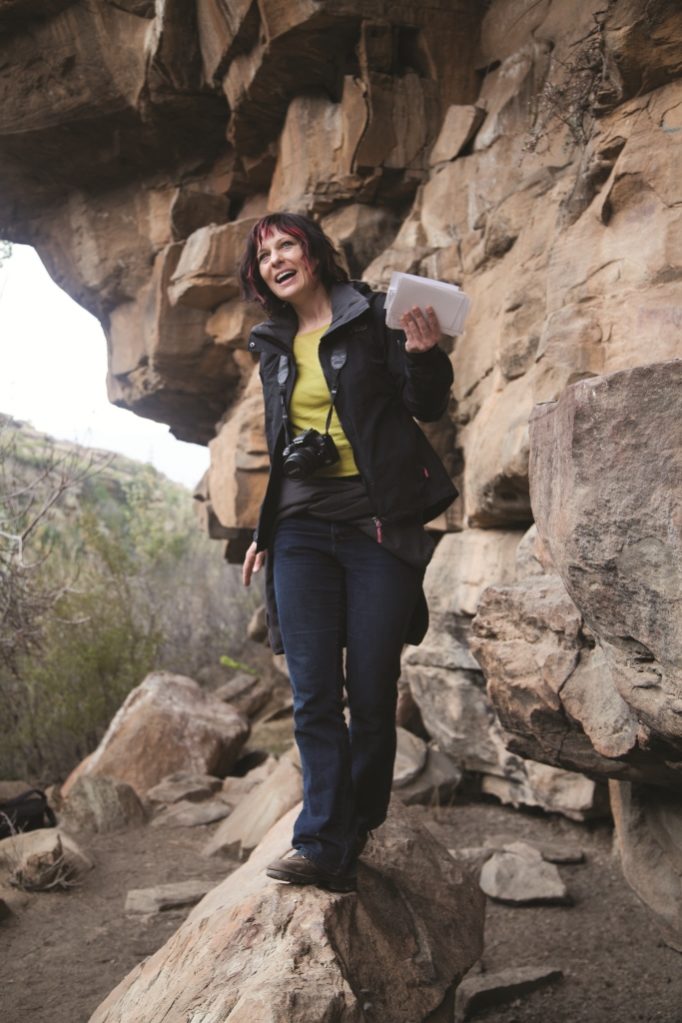It’s the last place you would expect to find a woman making a career: lying in the dirt on the edge of a cliff. Hunkered under the rock five meters from me is Justine Wintjes, archaeologist and Fine Art lecturer at the University of the Witwatersrand in Johannesburg. Under her keen eye is a rare rock art panel of stooped over black figures frozen for hundreds of years on the stone. Every now and again, her short cropped hair, black with a stripe of dyed pink fluorescent, bobs up and down as she sketches in the damp.
“In Africa, you can’t walk two meters without finding an artefact,” says Wintjes.
Below is a sheer drop to the village of Quthing, 183 kilometers South of Maseru, the capital of Lesotho. The squawks of chickens and barks of dogs drift up as people go about their daily lives. In many ways it was a mundane day in a strange place to be on the verge of an ancient art discovery.
“I just always loved old things. I was fascinated by ruins and abandoned buildings and old stuff. At some point I realized that through rock art I could combine my background in fine arts and archaeology.”
Wintjes and her team may have a host of digital gadgets to help guide them, but they still had to do good old-fashioned leg work in Quthing. They needed the help of the people to find the locations.
“Nowadays, because of online digital data, you can do a lot of preparatory fieldwork. Fieldwork on the internet, looking through books, through archival material you have collected digitally. You get a really good sense of where things are. But you are never entirely certain. You get errors in the archival system, or things that are slightly misleading. For example the two sites that we visited on this trip had the same name in the catalogue, but were in two very different sites. They were not even particularly close. Those are the sorts of things you can only find in the field,” says Wintjes.
“It’s a very exciting field particularly in Africa, given the antiquity we have on the continent. But there aren’t enough archaeologists, or art historians. There aren’t enough people interested in these fields. They really are important.”
So ends the discovery between a rock and a hard place to find.
